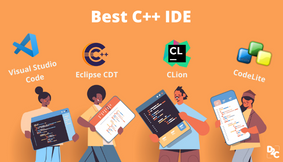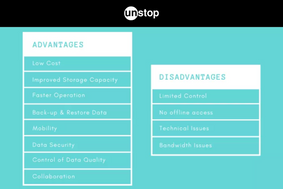- TCS Technical Interview Questions & Answers
- TCS Managerial Interview Questions & Answers
- TCS HR Interview Questions & Answers
- Overview of Cognizant Recruitment Process
- Cognizant Interview Questions: Technical
- Cognizant Interview Questions: HR Round
- Overview of Wipro Technologies Recruitment Rounds
- Wipro Interview Questions
- Technical Round
- HR Round
- Online Assessment Sample Questions
- Frequently Asked Questions
- Overview of Google Recruitment Process
- Google Interview Questions: Technical
- Google Interview Questions: HR round
- Interview Preparation Tips
- About Google
- Deloitte Technical Interview Questions
- Deloitte HR Interview Questions
- Deloitte Recruitment Process
- Technical Interview Questions and Answers
- Level 1 difficulty
- Level 2 difficulty
- Level 3 difficulty
- Behavioral Questions
- Eligibility Criteria for Mindtree Recruitment
- Mindtree Recruitment Process: Rounds Overview
- Skills required to crack Mindtree interview rounds
- Mindtree Recruitment Rounds: Sample Questions
- About Mindtree
- Preparing for Microsoft interview questions
- Microsoft technical interview questions
- Microsoft behavioural interview questions
- Aptitude Interview Questions
- Technical Interview Questions
- Easy
- Intermediate
- Hard
- HR Interview Questions
- Eligibility criteria
- Recruitment rounds & assessments
- Tech Mahindra interview questions - Technical round
- Tech Mahindra interview questions - HR round
- Hiring process at Mphasis
- Mphasis technical interview questions
- Mphasis HR interview questions
- About Mphasis
- Technical interview questions
- HR interview questions
- Recruitment process
- About Virtusa
- Goldman Sachs Interview Process
- Technical Questions for Goldman Sachs Interview
- Sample HR Question for Goldman Sachs Interview
- About Goldman Sachs
- Nagarro Recruitment Process
- Nagarro HR Interview Questions
- Nagarro Aptitude Test Questions
- Nagarro Technical Test Questions
- About Nagarro
- PwC Recruitment Process
- PwC Technical Interview Questions: Freshers and Experienced
- PwC Interview Questions for HR Rounds
- PwC Interview Preparation
- Frequently Asked Questions
- EY Technical Interview Questions (2023)
- EY Interview Questions for HR Round
- About EY
- Morgan Stanley Recruitment Process
- HR Questions for Morgan Stanley Interview
- HR Questions for Morgan Stanley Interview
- About Morgan Stanley
- Recruitment Process at Flipkart
- Technical Flipkart Interview Questions
- Code-Based Flipkart Interview Questions
- Sample Flipkart Interview Questions- HR Round
- Conclusion
- FAQs
- Recruitment Process at Paytm
- Technical Interview Questions for Paytm Interview
- HR Sample Questions for Paytm Interview
- About Paytm
- Most Probable Accenture Interview Questions
- Accenture Technical Interview Questions
- Accenture HR Interview Questions
- Amazon Recruitment Process
- Amazon Interview Rounds
- Common Amazon Interview Questions
- Amazon Interview Questions: Behavioral-based Questions
- Amazon Interview Questions: Leadership Principles
- Company-specific Amazon Interview Questions
- 43 Top Technical/ Coding Amazon Interview Questions
- Juspay Recruitment: Stages and Timeline
- Juspay Interview Questions and Answers
- How to prepare for Juspay interview questions
- Prepare for the Juspay Interview: Stages and Timeline
- Frequently Asked Questions
- Adobe Interview Questions - Technical
- Adobe Interview Questions - HR
- Recruitment Process at Adobe
- About Adobe
- Cisco technical interview questions
- Sample HR interview questions
- The recruitment process at Cisco
- About Cisco
- JP Morgan interview questions (Technical round)
- JP Morgan interview questions HR round)
- Recruitment process at JP Morgan
- About JP Morgan
- Wipro Elite NTH: Selection Process
- Wipro Elite NTH Technical Interview Questions
- Wipro Elite NTH Interview Round- HR Questions
- BYJU's BDA Interview Questions
- BYJU's SDE Interview Questions
- BYJU's HR Round Interview Questions
- A Quick Overview of the KPMG Recruitment Process
- Technical Questions for KPMG Interview
- HR Questions for KPMG Interview
- About KPMG
- DXC Technology Interview Process
- DCX Technical Interview Questions
- Sample HR Questions for DXC Technology
- About DXC Technology
- Recruitment Process at PayPal
- Technical Questions for PayPal Interview
- HR Sample Questions for PayPal Interview
- About PayPal
- Capgemini Recruitment Rounds
- Capgemini Interview Questions: Technical round
- Capgemini Interview Questions: HR round
- Preparation tips
- FAQs
- Technical interview questions for Siemens
- Sample HR questions for Siemens
- The recruitment process at Siemens
- About Siemens
- HCL Technical Interview Questions
- HR Interview Questions
- HCL Technologies Recruitment Process
- List of EPAM Interview Questions for Technical Interviews
- About EPAM
- Atlassian Interview Process
- Top Skills for Different Roles at Atlassian
- Atlassian Interview Questions: Technical Knowledge
- Atlassian Interview Questions: Behavioral Skills
- Atlassian Interview Questions: Tips for Effective Preparation
- Walmart Recruitment Process
- Walmart Interview Questions and Sample Answers (HR Round)
- Walmart Interview Questions and Sample Answers (Technical Round)
- Tips for Interviewing at Walmart and Interview Preparation Tips
- Frequently Asked Questions
- Uber Interview Questions For Engineering Profiles: Coding
- Technical Uber Interview Questions: Theoretical
- Uber Interview Question: HR Round
- Uber Recruitment Procedure
- About Uber Technologies Ltd.
- Intel Technical Interview Questions
- Computer Architecture Intel Interview Questions
- Intel DFT Interview Questions
- Intel Interview Questions for Verification Engineer Role
- Recruitment Process Overview
- Important Accenture HR Interview Questions
- Points to remember
- What is Selenium?
- What are the components of the Selenium suite?
- Why is it important to use Selenium?
- What's the major difference between Selenium 3.0 & Selenium 2.0?
- What is Automation testing and what are its benefits?
- What are the benefits of Selenium as an Automation Tool?
- What are the drawbacks to using Selenium for testing?
- Why should Selenium not be used as a web application or system testing tool?
- Is it possible to use selenium to launch web browsers?
- What does Selenese mean?
- What does it mean to be a locator?
- Identify the main difference between "assert", and "verify" commands within Selenium
- What does an exception test in Selenium mean?
- What does XPath mean in Selenium? Describe XPath Absolute & XPath Relation
- What is the difference in Xpath between "//"? and "/"?
- What is the difference between "type" and the "typeAndWait" commands within Selenium?
- Distinguish between findElement() & findElements() in context of Selenium
- How long will Selenium wait before a website is loaded fully?
- What is the difference between the driver.close() and driver.quit() commands in Selenium?
- Describe the different navigation commands that Selenium supports
- What is Selenium's approach to the same-origin policy?
- Explain the difference between findElement() in Selenium and findElements()
- Explain the pause function in SeleniumIDE
- Explain the differences between different frameworks and how they are connected to Selenium's Robot Framework
- What are your thoughts on the Page Object Model within the context of Selenium
- What are your thoughts on Jenkins?
- What are the parameters that selenium commands come with a minimum?
- How can you tell the differences in the Absolute pathway as well as Relative Path?
- What's the distinction in Assert or Verify declarations within Selenium?
- What are the points of verification that are in Selenium?
- Define Implicit wait, Explicit wait, and Fluent
- Can Selenium manage windows-based pop-ups?
- What's the definition of an Object Repository?
- What is the main difference between obtainwindowhandle() as well as the getwindowhandles ()?
- What are the various types of Annotations that are used in Selenium?
- What is the main difference in the setsSpeed() or sleep() methods?
- What is the way to retrieve the alert message?
- How do you determine the exact location of an element on the web?
- Why do we use Selenium RC?
- What are the benefits or advantages of Selenium RC?
- Do you have a list of the technical limitations when making use of Selenium RC? Selenium RC?
- What's the reason to utilize the TestNG together with Selenium?
- What Language do you prefer to use to build test case sets in Selenium?
- What are Start and Breakpoints?
- What is the purpose of this capability relevant in relation to Selenium?
- When do you use AutoIT?
- Do you have a reason why you require Session management in Selenium?
- Are you able to automatize CAPTCHA?
- How can we launch various browsers on Selenium?
- Why should you select Selenium rather than QTP (Quick Test Professional)?
- Airbus Interview Questions and Answers: HR/ Behavioral
- Industry/ Company-Specific Airbus Interview Questions
- Airbus Interview Questions and Answers: Aptitude
- Airbus Software Engineer Interview Questions and Answers: Technical
- Importance of Spring Framework
- Spring Interview Questions (Basic)
- Advanced Spring Interview Questions
- C++ Interview Questions and Answers: The Basics
- C++ Interview Questions: Intermediate
- C++ Interview Questions And Answers With Code Examples
- C++ Interview Questions and Answers: Advanced
- Test Your Skills: Quiz Time
- MBA Interview Questions: B.Com Economics
- B.Com Marketing
- B.Com Finance
- B.Com Accounting and Finance
- Business Studies
- Chartered Accountant
- Q1. Please tell us something about yourself/ Introduce yourself to us.
- Q2. Describe yourself in one word.
- Q3. Tell us about your strengths and weaknesses.
- Q4. Why did you apply for this job/ What attracted you to this role?
- Q5. What are your hobbies?
- Q6. Where do you see yourself in five years OR What are your long-term goals?
- Q7. Why do you want to work with this company?
- Q8. Tell us what you know about our organization
- Q9. Do you have any idea about our biggest competitors?
- Q10. What motivates you to do a good job?
- Q11. What is an ideal job for you?
- Q12. What is the difference between a group and a team?
- Q13. Are you a team player/ Do you like to work in teams?
- Q14. Are you good at handling pressure/ deadlines?
- Q15. When can you start?
- Q16. How flexible are you regarding overtime?
- Q17. Are you willing to relocate for work?
- Q18. Why do you think you are the right candidate for this job?
- Q19. How can you be an asset to the organization?
- Q20. What is your salary expectation?
- Q21. How long do you plan to remain with this company?
- Q22. What is your objective in life?
- Q23. Would you like to pursue your Master's degree anytime soon?
- Q24. How have you planned to achieve your career goal?
- Q25. Can you tell us about your biggest achievement in life?
- Q26. What was the most challenging decision you ever made?
- Q27. What kind of work environment do you prefer to work in?
- Q28. What is the difference between a smart worker and a hard worker?
- Q29. What will you do if you don't get hired?
- Q30. Tell us three things that are most important for you in a job.
- Q31. Who is your role model and what have you learned from him/her?
- Q32. In case of a disagreement, how do you handle the situation?
- Q33. What is the difference between confidence and overconfidence?
- Q34. If you have more than enough money in hand right now, would you still want to work?
- Q35. Do you have any questions for us?
- Interview Tips for Freshers
- Tell me about yourself
- What are your greatest strengths?
- What are your greatest weaknesses?
- Tell me about something you did that you now feel a little ashamed of
- Why are you leaving (or did you leave) this position??
- 15+ resources for preparing most-asked interview questions
- CoCubes Interview Process Overview
- Common CoCubes Interview Questions
- Key Areas to Focus on for CoCubes Interview Preparation
- Conclusion
- Frequently Asked Questions (FAQs)
- Data Analyst Interview Questions With Answers
- About Data Analyst
Best Paypal Interview Questions To Take You A Step Closer To Your Dream Job!

PayPal is a company that is known across the globe. Due to its work culture, attractive salary packages, and other incentives, Paypal is a dream company for many job seekers. If you are one of them, we have some help for you. In this article, we shall discuss some of the most asked technical (coding) and HR questions. Let's get started,
Recruitment Process at PayPal
The PayPal recruitment process is considered among the toughest. The interview rounds could be tricky too. Hence, you need to make sure you take some mock interviews during the preparation period.
PayPal adopts a candidate-friendly method for on-campus grounds as well as focuses on factors other than an applicant's technical talent and expertise while making hiring decisions. Here is the interview procedure of PayPal to give you a brief idea.
- 1. General screening
- 2. Technical round
- 3. HR round
Technical Questions for PayPal Interview
Here are some of the frequently asked technical questions that you must know in order to clear your PayPal interview and bag a job in your dream company.
1. What does a callback function do?
A function that is supplied as such an argument into some other function is referred to as a callback function. This type of function would then be run within the context of the outer function to finish some form of routine or activity. The above example illustrates a synchronous callback because it is carried out at the same instant as the original request.
2. What is the static method?
In Java, a method is referred to as 'static' if it is not associated with a specific instance of a class but rather a part of the class itself. Every single instance of a class can use the method that the class provides. Without relying on the class object, static methods can make use of the class variables (also known as static variables).
3. Is 0 among the non-negative or positive integers?
Even though zero would be neither positive nor negative, the word non-negative is occasionally employed to refer to just an amount that can be either positive or zero. Notably, the term nonpositive is occasionally employed to refer to a number that is either negative or zero. The term non-negative refers to a number that can be either positive or zero. The value of zero is considered a non-threatening number.
4. What is the binary tree used for?
Because they offer a way to organize data in a hierarchical structure, binary trees are utilized extensively in the field of computer science for the purposes of searching and sorting. Insertion, deletion, and traversal, are a few of the most frequent operations which can be carried out on binary trees.
5. What is 'tree In postorder traversal'?
One of the methods that can be used to visit nodes in a tree is called postorder traversal, and it is one of the approaches that can be used to traverse trees. Specifically, it adheres to the LRN (left-right node) principle. When attempting to determine a tree's postfix expression, the postorder traversal method is used.
6. What are duplicate nodes?
It is possible to define duplicate nodes as two or more nodes that have identical X, Y, and Z coordinates but have unique node numbers. This is one definition of the term. For instance, if node number 5 has coordinates of 7, 10 and 0 and node number 83 likewise has coordinates of 7, 10 and 0, then nodes 5 and 83 are both considered to be duplicates of one another.
7. What is the three-step coding process?
There are three stages of coding: open coding, axial coding, and selective coding. Open coding encompasses the following three stages: descriptive coding, in-vivo coding, and process coding.
8. What are the four types of access specifiers?
To put it more succinctly, there are four different kinds of access modifiers: public, private, protected, and default (no keyword).
9. What are the differences between SciPy and NumPy in Python?
NumPy and SciPy are two of the essential libraries in the Python programming language. They can perform a very diverse range of functions as well as a variety of different procedures. Numerical Python is shortened to NumPy and Scientific Python is shortened to SciPy. Both of these acronyms refer to the Python programming language. Both of these things are modules of the Python programming language and they are used to conduct a variety of operations on the data.
10. What is digital payment infrastructure?
A digital payment, also known as an electronic payment, involves the transfer of money through one payment method to another that uses a digital device such as a cellular telephone, POS (point of sales) or computer, or even a digital channel of communication including such mobile wireless information or SWIFT (Society for the Worldwide Interbank Financial).
11. What do you mean by event loop?
It is a structure in computer programming that continuously checks for the occurrence of external events and then calls the relevant routines in order to deal with such occurrences. The primary loop in a program is frequently an event loop, which normally waits for input from the user before initiating any action.
12. What is the inversion count in Java?
Any array's inversion count can be thought of as the number of steps necessary to sort the array, or alternatively, it can be interpreted as a measure of how far away any array is from just being sorted. In the event that we are provided with an array that has been arranged in the opposite of the desired order, the inversion count will correspond to the greatest number included within that array.
13. What is functional programming?
The concept of mathematical functions serves as the foundation for functional programming. Lisp, Python, Erlang, Haskell, and Clojure are just a few examples of the many languages that fall within the category of functional programming. Languages that 'Sole Support' the 'Functional Paradigm Purely Functional' languages are the exclusive form of functional language that only supports the functional paradigm.
14. Why do we use dynamic polymorphism?
Java's ability to support the overriding of methods, which is a fundamental component of polymorphism that occurs at runtime, is made possible by dynamic polymorphism. It enables a class to describe methods that will be shared by all of its descendants while at the same time permitting subclasses to specify the particular implementation of any or all of those methods.
15. What are the stages of memory functions?
Memory can be broken down into several stages, including sensory, short-term, and long-term memory. In accordance with this theory, the information is first stored in the sensory memory, then it is transferred to the short-term memory, and finally, it is stored in the long-term memory. However, not all information is retained throughout the course of all three steps; the majority of it is lost.
Stay ahead! Never miss out any trending job or internship opportunity!
16. What is the difference between comparator and comparable?
Comparable user interfaces are utilized in the process of sorting the objects according to their natural ordering. A comparator is an object that may be used in Java to compare and sort the properties of two separate objects. The comparable interface performs the comparison between the 'this' reference and the object that is given. The comparator component of Java is responsible for making class object comparisons between two different classes.
17. What is the difference between visibility and hidden none?
Display: none tells the browser that the tag in question should not be displayed anywhere on the page. There will be no room for it to fit in between the other tags that are being used. In contrast to the display: none directive, the visibility: hidden directive causes the tag to be invisible while still reserving space for it on the page.
18. What is known as method overriding?
The subclass takes on the characteristics and functionalities of the superclass it is derived from. Now, if a method is specified in both the superclass as well as the subclass, then the method that is specified in the subclass class will take precedence over the method that is written in the superclass. The term for this practice is method overriding.
19. What are the differences between lists and arrays?
A list is a container that may hold objects, which typically include components of several different data kinds. An array is another important part of the system that gathers together numerous instances of the same data type. List is not capable of doing mathematical calculations. Array is capable of handling mathematical calculations.
20. Where is the static variable?
The static variable is employed to refer to the property that is shared by all objects and is not specific to any one object. This could be the name of the company where workers work, the name of the college where students attend school, or something similar. The memory allocated for a static variable is only used once in the class area, and that occurs at the moment when the class is loaded. Your software will have a smaller memory footprint if you choose to make use of static variables (it saves memory). A static variable is one that is associated with the class and not the object itself.
21. Why can strings in Java not be changed once they have been created?
In Java, string objects have a property known as immutability, which basically implies that once the 'String' object is created, its state can be updated. Java will generate a new string object every time you attempt to edit the value of that object rather than updating the values of that specific object. Due to the fact that string objects are often cached in the 'String' pool, they cannot be changed after they have been created. Because string literals are typically shared between numerous clients, actions taken by one client could potentially influence other clients. The application's performance, caching, and synchronization, as well as security, are all improved as a result.
22. What is the difference between String and StringBuffer?
The 'String' class is an immutable one, which means that once it has been generated, its content cannot be altered in any way. Due to the fact that 'StringBuffer' is a changeable class, the contents of the buffer can be altered at a later time. When we make changes to the contents of the 'String' object, the program generates a new string as well as refers to that. It does not modify the string that is already there. This is the reason why working with 'StringBuffer' results in higher performance than working with String.
23. What is enum in Java?
In a programming language, the enumeration notation is used to denote a collection of named constants for a specific purpose. For instance, the four suits that come with a standard deck of playing cards might be represented by four enumerators called Club, Diamond, Heart, and Spade. These enumerators would be considered members of an enumerated type called Suit. Other examples include naturally occurring categories that have been enumerated. Whenever we understand all of the potential values at the time of compilation, such as when making selections from a menu, selecting rounding modes, specifying flags on the command line, etc., we use enums. And, it is not required that the collection of constants included within an enum type remain static over the entirety of its lifetime.
24. What is meant by the term 'friend function'?
If a function prototype is declared outside of the scope of the class and is prefaced with the term 'friend', then it is granted permission to access every one of the class' secret and protected variables. Friends are not considered to be member functions of the class even when the prototype of the friend function is included in the definition of the class. Moving onto the second part of the topic, Java does not have the 'friend' term, but the idea of a friend function can be achieved in Java by selecting the right access specifiers for such a class and the members of the class.
25. What is the order of priority for the threads?
Simply put, the concept of thread priority refers to the order in which threads are given the opportunity to be executed. Those with a higher priority are given the ability to do so before threads with a lower priority. One is able to specify the priority, but it is not a given that the thread with the higher priority would run before the thread with a lower priority. The priority of each thread is taken into consideration by the thread scheduler when determining which thread will receive the processor. From the lowest priority to the highest priority, the range of priority shifts between 1 and 10.
26. What does the structure of Java Heap consist of?
Memory for all class instances and arrays is allocated from the heap, which is part of the Java Virtual Machine (JVM). The heap serves as the runtime data area. During the beginning of the JVM process, it is produced. A garbage collector is an autonomous memory management system that is responsible for reclaiming the heap memory that has been allocated to various objects. Memory in a heap contains both living and nonliving items. The program is able to interact with live objects and garbage collection will not be performed on them. The term 'dead object' refers to any item that the application will never be able to access but that the garbage collector has not yet gathered up. These kinds of items take up space in the heap memory until they are ultimately collected by the garbage collector.
27. In Java, do you have any idea how the concept of reflection works?
Java's reflection feature is, at its core, a 'Runtime Application Programming Interface' (API) that assists in tracking changes in the behavior of classes and objects contained within the class, in addition to the methods and interfaces that make up the class. Programmers are able to study the behavior of a variety of components during runtime with the help of reflection. This allows them to do so without needing to know whether or not these elements have been called during the compilation process.
28. How does one go about putting binary search into practice?
In order to successfully implement binary search, the members of the array need to be sorted. The following are the requirements for the binary search algorithm to function properly. If the value of the key is smaller than the value of the element in the center of the array, then we need to confine our search to the first 50 percent of the array. If the key is greater than that of the element in the middle of the array, then we need only look in the second half of the array for the value we are looking for. And, if the key is equivalent to the element that is located in the array's middle position, then the search is finished. In the final step, a return value of -1 should be made if the key in question cannot be located anywhere in the entire array. This reveals that the component is missing from the system.
29. What do you know about classes?
In this high-level programming language, it is critical to have a solid understanding of the concept of classes, which are sometimes referred to as the blueprints for the objects that are created. A class is important in explaining the nature of the object, including its values, default value, and behavior. An object is a component of a class that contains both data and procedures in its implementation. Objects are members of classes.
30. Could you please explain Java String Pool?
Java String Pool is a collection of strings that are either immediately accessible or saved in the heap memory. This is used whenever there is a new object creation to check if the object has already been created or not. And, it operates in accordance with the results of that check. If it is not already accessible, then a new object will be generated in the String Pool, as well as the variable will receive the exact reference that was requested. If it is the case that it is already accessible, then the variable will receive the same reference as before.
31. What is composition in relation to Java?
It is a particularly powerful type of relationship that takes on a specific form of aggregation and is known as the 'death' relationship. In this child, an object's lifecycle is not recognized. And, if the parent object is deleted or removed, then every child object will likewise be destroyed. If an object also isn't recognized by its lifecycle, then it cannot be a child of that object. An illustration of a house and its rooms may be found here: Rooms are an integral component of our houses and cannot stand on their own. In the event that the residence is removed, all of the rooms will be terminated immediately due to the fact that they will no longer have their lifecycle.
32. What is object cloning when referring to Java?
The process of making an item that is an identical clone of itself is referred to as object cloning, and it is an essential concept to comprehend. It is also possible to describe it as the capability of producing an item having a state that is comparable to the state of the original object. In order to clone an object, for this reason, the clone() means or method of an object clone is employed. Since it is a protected method, one must override it in order to clone an object.
33. Define ClassLoader.
Core Java, which is the standard version of Java, comes with a virtual machine that branches off into ClassLoaders. Notably, ClassLoaders are typically employed for the process of loading class files. A Java program is loaded into memory at the beginning of the execution of this feature. Java virtual machine is equipped with three class loaders: the extensions ClassLoader, the bootstrap ClassLoader, and the system class loader. The bootstrap ClassLoaders serve as the superclass for the ClassLoaders that are associated with the extension. It comes complete with all of Core Java's class files. The extension ClassLoaders are the children of the former, but they are the parents of the system ClassLoaders and application ClassLoaders, respectively. Jar file loading is accomplished with its assistance. Last but not least, the ClassLoaders that are used by the system or the applications load class files from the classpath.
34. What is an object-oriented paradigm?
Whenever it comes to programming and the languages that go along with it, there are a few different approaches that are known as paradigms. The object-oriented paradigm is at the foundation of Core Java. This paradigm is built on the premise that methods must be defined in the parent class but that objects must have data. This paradigm, as a result, employs reusability and modularity in its design. It possesses multiple characteristics, including the following: When creating programs, it takes a bottom-up approach, adopts a real-time approach including abstraction, and places a primary emphasis on data, the methods used to access and change the object's data, and ideas like abstraction and encapsulation.
35. Share differences between constructors and methods.
The distinctions between Java methods and contractors can be broken down into five primary categories. The primary function of constructors is to set the starting state of an object, whereas the behavior of a particular object is revealed by the methods that are associated with it. Contrary to methods, constructors are not required to have a return type. However, methods are required to have their respective return types. Java methods are invoked explicitly, whereas constructors are called upon in an implicit fashion if they are not defined.
In Java, the names of the constructors and the class names must be identical. On the other hand, the names of the methods, which may or may not be identical, are not required to be identical. In conclusion, a method that does not have a program function Object() { [native code] } will cause the Java compiler to provide a default function Object() { [native code] }. This function Object() { [native code] }, however, will not be applicable to the method.
36. What is Double Brace Initialization'?
Double Brace Initialization is a popular phrase in Java that arises whenever two separate processes are integrated into a single operation. In this particular scenario, there are two sets of braces: the first of these braces is responsible for the creation of anonymous inner classes and the second of these braces serve as an initialization block. When both the initial and second braces are used during the same time, a phenomenon known as Double Brace Initialization takes place. In this scenario, the inner class is frequently used to construct and initialize collections, which results in a reduction in the amount of code and an improvement in the readability of the program.
37. Differentiate between heap and stack
Both Java and Core Java place a significant emphasis on the memory locations known as the heap and the stack. On the other hand, there are differences between them in terms of memory, access, memory management, longevity, and utilization. When it comes to memory, stack memory can only support one execution thread at a time, whereas heap memory can accommodate the entirety of a particular application. It is not feasible for other threads to access the memory of the stack when it is being used, but things located in the heap have global access.
Memory management in the heap is based on the generation aligned to each object, but memory management in the stack generally follows the LIFO algorithm. You should also anticipate that the stack will continue to run until a particular thread comes to a finish, whereas the lifespan of the heap will come to a stop after the application has been completely executed. Last but not least, newly formed objects are typically saved in heap, whereas stack is home to only locally accessible primitives as well as reference variables.
38. Can you explain what static methods and variables are?
When we make a variable static in Java, the value of that variable is preserved across all the methods of the class. This is accomplished by using the static keyword, which may be used for any variable or method in Java. It is as if we have established a permanent value for that method or variable. In general, we utilize static methods as well as variables for classes when we want every object of that class to have the same method and variable.
39. What is an interface?
The set of static constants and abstract procedures that make up an interface is known as an interface. Classes are responsible for implementing the interface, and as a result, classes inherit the interface's abstract methods. In this context, abstract methods refer to method signatures solely.
40. What does it mean to make an exception?
An anomaly that occurs outside of the expected course of execution is referred to as an exception. An exception could be thrown by a method when something goes wrong during the runtime. In the event that the exception could not be managed, the execution would be stopped before it had the chance to finish the task.
41. What is the difference between events and an incident?
While an event is any occurrence that could be observed, verified, and recorded, an incident is one or more connected events that negatively affect the firm and/or impact its security posture. An event is any occurrence that can be observed, verified, and documented.
HR Sample Questions for PayPal Interview
Check out these HR questions that you can really use to prepare yourself for the Paypal interview and perform well.
42. Do you believe that you have the required soft skills for this job role?
43. Will you be able to handle that backend of online payment transactions?
44. What do you think about our digital payments system?
45. Are you ready for a sudden testing interview round?
46. Have you ever given an elevator pitch?
47. What do you think is your biggest mistake?
48. Can you tell me something about your earlier client project?
49. How much do you rate your technical skills on a scale from 1 to 10?
50. What do you think about our interview process so far?
51. Tell us something about your family background?
52. How would you handle a difficult client?
53. What are the key differences you find between this and your previous job?
About PayPal
PayPal is an online payment processor that is consistently ranked among the most prominent on a global scale. The history of PayPal is marked by a prosperous timeline of expansion as well as innovation, making it the preferred method of payment for a significant number of customers.
With PayPal, a customer or a business may make and receive payments online in a safe, hassle-free, and cost-effective manner, provided they have an email address. Its network creates a global, real-time payment system by utilizing the pre-existing financial infrastructure, which consists of both credit cards and bank accounts. PayPal provides a product that is an excellent fit for people, small enterprises, and online merchants that are currently unsatisfied with the services provided by traditional payment channels. Users of PayPal are capable of making payments online in a safe manner using a variety of payment methods, including credit cards, bank transfers, and PayPal accounts.
You may also like to read:
- Tech Mahindra Interview Questions, Recruitment Rounds, Preparation Tips, And More
- IBM Interview Questions For Software Developers (2025)
- Best Paytm Interview Questions To Help You Prepare Well
- Most Important Mphasis Interview Questions 2025
- Top Flipkart Interview Questions That You Must Prepare!
As a biotechnologist-turned-writer, I love turning complex ideas into meaningful stories that inform and inspire. Outside of writing, I enjoy cooking, reading, and travelling, each giving me fresh perspectives and inspiration for my work.
Login to continue reading
And access exclusive content, personalized recommendations, and career-boosting opportunities.
Subscribe
to our newsletter
Blogs you need to hog!

This Is My First Hackathon, How Should I Prepare? (Tips & Hackathon Questions Inside)

10 Best C++ IDEs That Developers Mention The Most!

Advantages and Disadvantages of Cloud Computing That You Should Know!















Comments
Add comment